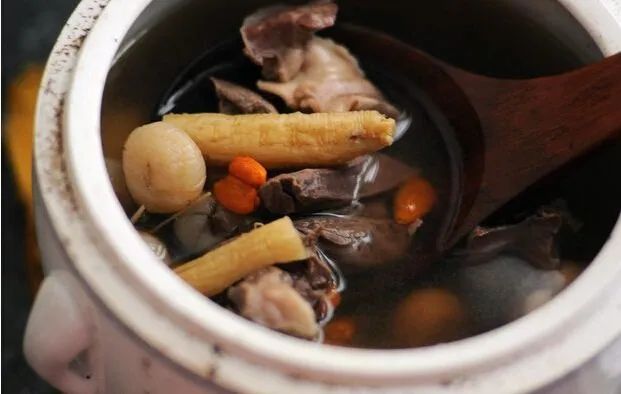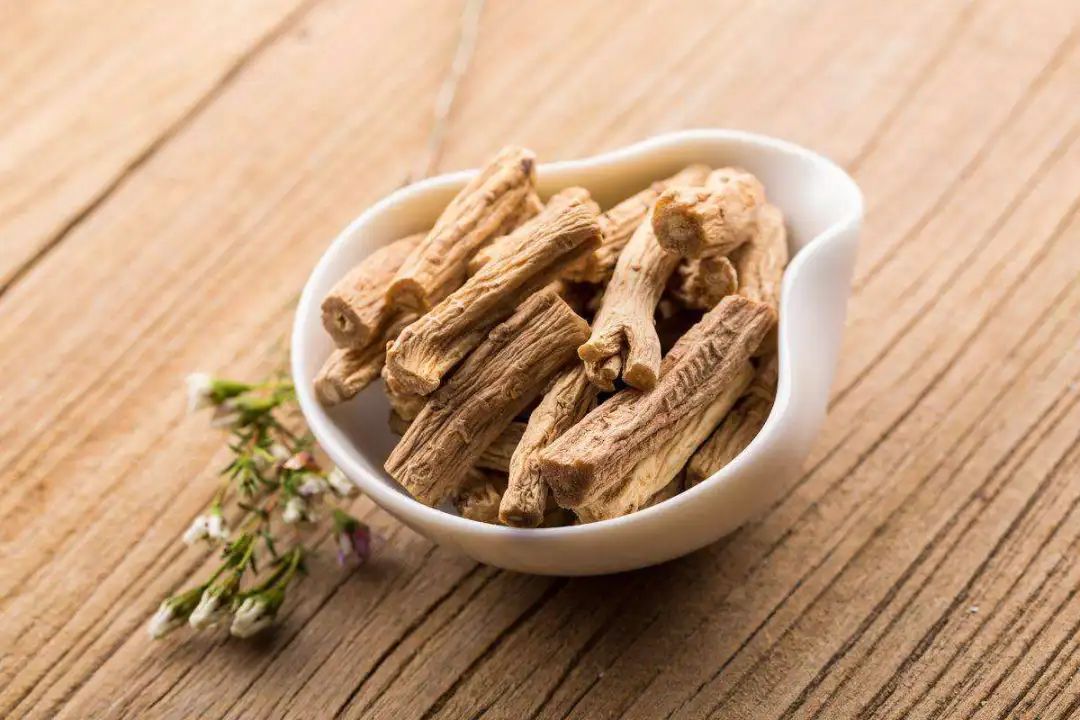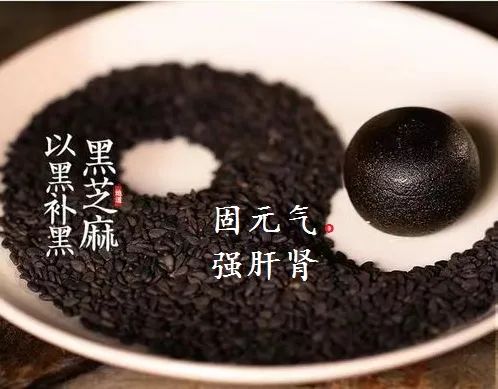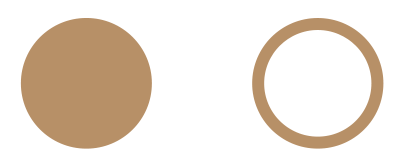

In clinical practice, due to the high cost of Ren Shen (Ginseng), we often prescribe Dang Shen (Codonopsis) as a substitute. Although both are named “shen,” they belong to different families and have distinct effects, leading to a significant difference in therapeutic efficacy. Let us explore the differences between these two herbs!

01The differences in the botanical properties of Ren Shen and Dang Shen. In the herbal literature prior to Zhang Shiwan’s “Benjing Fengyuan,” there were entries for Ren Shen but none for Dang Shen, or they were confused, as noted in the “Bielu” which states: “Ren Shen grows in the upper party mountains and in Liaodong.”
Li Shizhen in the “Compendium of Materia Medica” stated: “The upper party is now Lushi. The people consider Ren Shen to be harmful to the locality and no longer harvest it; what is used now is all Liaoshen.” He also mentioned: “Now Lushi cannot produce Ren Shen, and those from other places are even less reliable.”
This indicates that the Ren Shen produced in Lushi was not seen by Li, suggesting that Lushi does not produce Ren Shen, while Ren Shen is found in Liaodong. This may be limited by historical conditions and a lack of knowledge in pharmacognosy.
Especially in modern times, due to the high price of Ren Shen, Dang Shen is often used as a substitute, but the differences in family, origin, and function are significant and worth clarifying.
Ren Shen is a plant of the Araliaceae family, primarily produced in the three northeastern provinces of China, with Jilin Province having the highest yield. The wild variety is called “wild mountain ginseng,” while the cultivated variety is called “garden ginseng.” If small wild mountain ginseng is transplanted to fields, or small garden ginseng is transplanted to the mountains and grows, it is referred to as “transplanted mountain ginseng.”
Its taste is sweet with a slight bitterness, and the raw form is neutral in nature, such as raw sun-dried ginseng and white sugar ginseng, while the cooked form is slightly warm, such as red ginseng and Biezhi ginseng.
Ren Shen has the functions of tonifying qi and nourishing blood, calming the spirit, and stabilizing collapse, which can enhance the body’s resistance to disease, treat various deficiencies, spleen and stomach weakness, excessive blood loss, and insufficient heart qi.
Ji Yi Dongdong in “Yao Zheng” states: “Ren Shen is indicated for hardness and distension below the heart; it also treats loss of appetite, vomiting, preference for spitting, heart pain, abdominal pain, and sudden palpitations.”
This is based on the indications of Xiao Chai Hu Tang and Ban Xia Xie Xin Tang from the “Shang Han Lun,” which has its significance.

02
Regarding the pros and cons of using Ren Shen, Xu Lingtai elaborated. In “Benjing Baizhong Lu,” he stated: “Ren Shen is powerful and severe; if used improperly, its harm is greater than that of other medicines.”
Nowadays, the use of ginseng by physicians often saves lives less frequently and causes death more often. It is said that one in ten deaths is due to deficiency, while eight or nine out of ten are due to disease.
Ren Shen excels at tonifying deficiency but is less effective at attacking diseases. Physicians do not differentiate whether the disease has resolved or not; for those with chronic illness or weak bodies, or wealthy individuals, they all must use ginseng. This is both overly cautious and a way to evade responsibility. Patients also consider using ginseng as a way to show filial piety, not realizing that using ginseng when the disease has not resolved not only fails to replenish qi but also solidifies the root of the disease, rendering plasters ineffective, leading to no recovery, hence the saying that it causes more deaths.
Some argue that in Zhang Zhongjing’s formulas for cold damage, there are many instances of using ginseng when the disease has not resolved, such as in Xiao Chai Hu Tang and Xin Jia Tang; why is this? This is because it is a method of tonifying while purging.
Ancient practitioners were meticulous in diagnosing conditions, understanding that diseases can be divided into categories. When they are combined, both evil and righteous qi coexist, and the focus is on attacking and dispersing. When they are divided, evil and righteous qi are separated, with both deficiency and excess present; the excess should be purged, and the deficiency should be tonified. In a formula, if both can be used without hindrance and can assist each other, then ginseng can be used to build the center and generate fluids, expelling evil qi, which is even more effective.
If evil qi is still strong and has not been divided, it must be treated specifically, and there is no method to use ginseng. Moreover, it is also included in dispersing medicines, and there is no instance of it being used in conjunction with Shudihuang or Yumei in formulas for infectious diseases. Understanding this, one can avoid using ginseng to harm or kill people.
Additionally, there is Tai Zi Shen. In the past, small ginseng was selected out and called “Tai Zi Shen,” which was also slightly cheaper. However, the Tai Zi Shen sold in pharmacies today is often the root of Dianthus, which is used as a substitute for ginseng, having only the function of generating fluids, with very little tonifying qi power.
Western ginseng is also a member of the Araliaceae family. Wu Yiluo’s “Ben Cao Cong Xin” states that its taste is sweet with a slight bitterness, and it is cool in nature, tonifying the lungs, lowering fire, generating fluids, and suitable for those who are fatigued and have deficiency with heat.
In modern clinical practice, formulas like Bai Hu Jia Ren Shen Tang or Zhu Ye Shi Gao Tang often use Western ginseng as a substitute for Ren Shen, as its properties seem to align better with heat-related diseases.
For example, a patient named Wu suffered from hemolytic anemia and previously used Biezhi ginseng, but the heat in the blood could not be controlled, resulting in dry lips and confusion. I prescribed a formula of Di Huang Tang with 3g of Biezhi ginseng and 6g of Western ginseng, and after two doses, the blood stopped and the spirit cleared, demonstrating that Western ginseng’s cool nature can neutralize the warmth of Biezhi ginseng, achieving a balance of warm and cool, with effects as clear as a drum.

03
Recent advancements in pharmacological research on ginseng, both domestically and internationally, have revealed new findings. Its main components include ginsenosides, glucose, and rhamnose.
The stem and leaf components are basically the same as those of the root. The ginseng leaf also contains the same saponins, and clinical trials have shown that its emetic effect is not significant, and it can also be used medicinally.
Pharmacological experiments indicate that it can regulate the excitation and inhibition activities of the cerebral cortex; it can provide a defensive effect against various harmful stimuli; and while it does not produce adrenal cortex hormone-like effects on the pituitary-adrenal cortex system, it does have some influence.
Reports indicate that ginseng can enhance tissue respiration, promote carbohydrate fermentation, increase energy metabolism, and stimulate protein synthesis, thereby enhancing immune function.
Other experimental studies suggest that it may have a certain preventive effect on experimental gastric ulcers in rats; however, another study indicated that it exacerbated pyloric ligation ulcers in rats. The experimental results are not consistent, which may be related to differences in experimental methods.
Dang Shen was first recorded in Zhang Shiwan’s “Benjing Fengyuan” in 1705, followed by entries in Zhao Xueming’s “Ben Cao Gang Mu Shi Yi” and Wu Yiluo’s “Ben Cao Cong Xin,” thus establishing itself as an independent item.
Botanically classified, it belongs to the Campanulaceae family, with roots that are long and cylindrical, 1-1.7cm in diameter, with a slightly larger root tuber at the top, and the outer skin is milky yellow to light gray-brown, with many longitudinal wrinkles, distinguishable from ginseng by its beak-like root head and many straight lines with root hairs.
This product is produced in Shanxi and Gansu provinces and has the functions of clearing lung fire, strengthening the spleen, and generating fluids.
“Ben Cao Feng Yuan” states: “Upper party ginseng, although it does not have the sweet, warm, and severe tonifying power, still possesses the sweet, neutral, and clear tonifying ability, and is not as cold as Sha Shen, which specializes in draining lung qi.” Zhang’s evaluation of its efficacy is quite fair. In modern times, Zhang Shanlei in “Ben Cao Zheng Yi” states that Dang Shen “can tonify the spleen, nourish the stomach, moisten the lungs, generate fluids, and strengthen the central qi, which is not far from Ren Shen… but its power is relatively weak and cannot be sustained.
For those who are deficient after illness, taking two to three qian can stop the excessive vibration of their spirit for a day, which is indeed in line with the principles of moderation and balance, but it may not be able to endure for long.
However, it assists in nourishing the center and moistening the four corners… thus, all the formulas from ancient to modern that use Ren Shen can be replaced by Lushi Dang Shen.” This shows that the use of Dang Shen as a substitute for Ren Shen has a long history, but the functions of Dang Shen and Ren Shen are significantly different, and careful differentiation in application is necessary.
Regarding the components and pharmacological research of Dang Shen, it has been reported that its root contains saponins and trace alkaloids, sucrose, glucose, and mucilage.
Animal experiments indicate that Dang Shen can slightly increase red blood cells and hemoglobin, elevate blood sugar, and reduce white blood cells. I once used 60g of Dang Shen as a daily dose to treat chronic myelogenous leukemia, resulting in a decrease in white blood cells and alleviation of the condition, which seems to align with animal experiments.
In summary, the botanical families, origins, functions, and components of Ren Shen and Dang Shen are significantly different, and each has its unique effects.
Click the image below for limited-time offers in our WeChat store
Jiu Zheng Jiu Shan Huang Jing Zhi Ma Wan


 Desheng Daoist
Desheng Daoist
Learning, communication, and contributions Add the editor’s private WeChat
Long press the left QR code to recognize and add


● An unintentional “fist” can actually concentrate and nourish liver qi!
● Men should cool nourish, women should warm nourish! Are you doing it right?
● Never underestimate “stomping your feet”; it is one of the body’s most important protective mechanisms!
● Dry hands and feet? Chapped lips? These little life hacks will definitely come in handy!
● What kind of body is considered healthy? In the eyes of Daoist medicine, a “healthy person” must meet these six conditions!
● “Raising children does not necessarily prevent aging,” but acupoint massage can!

 Daoist Medicine
Daoist Medicine
Long press the QR code above to follow


